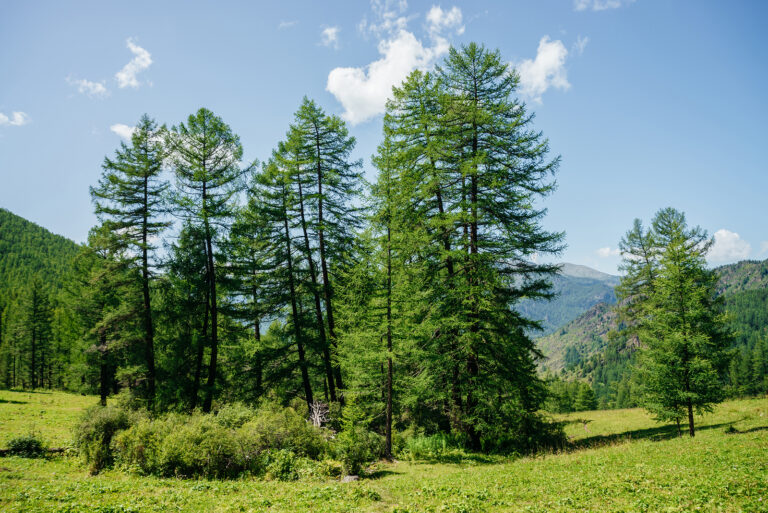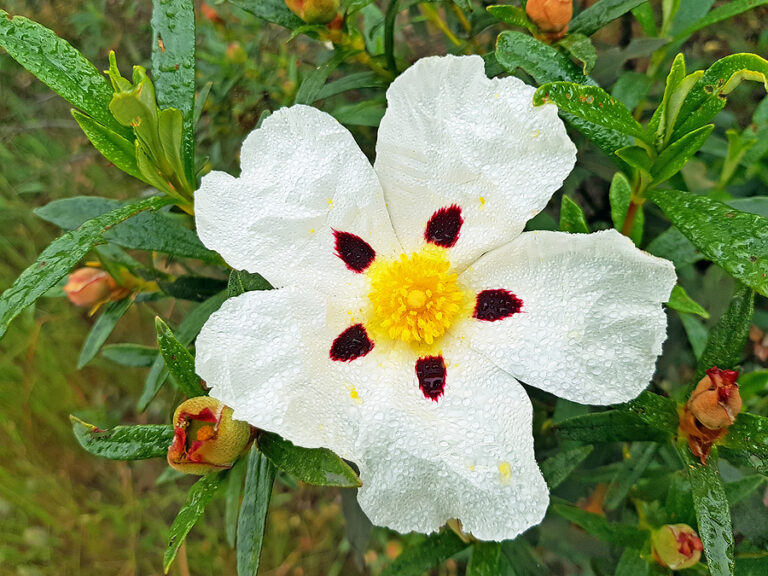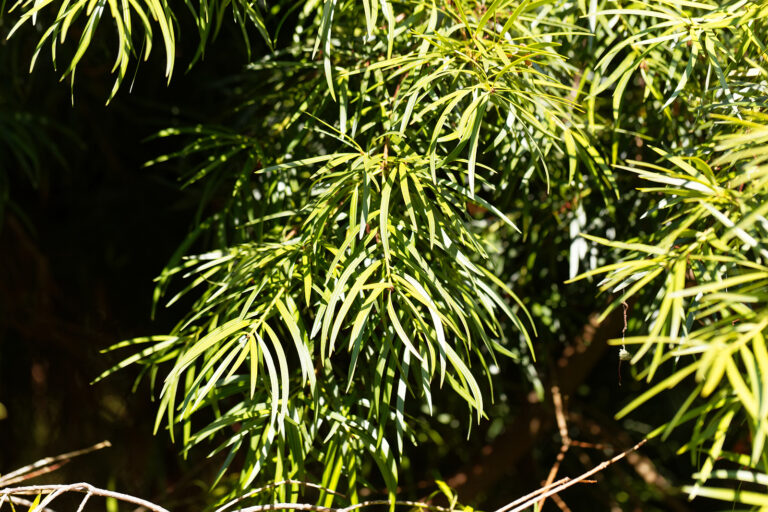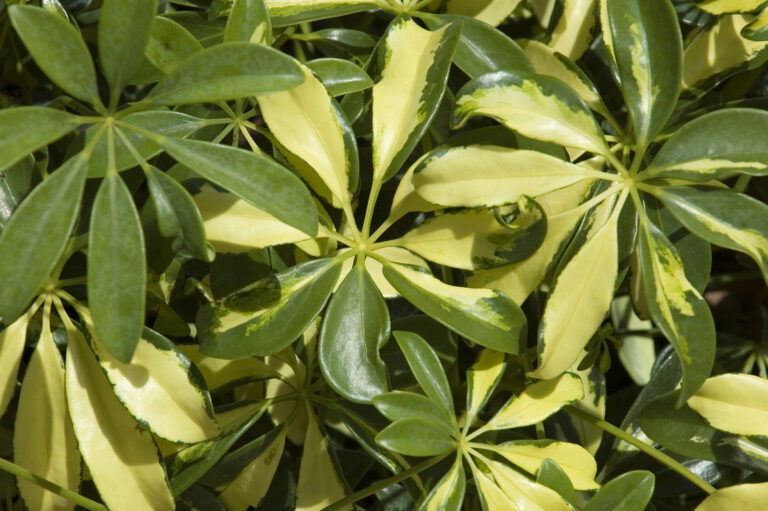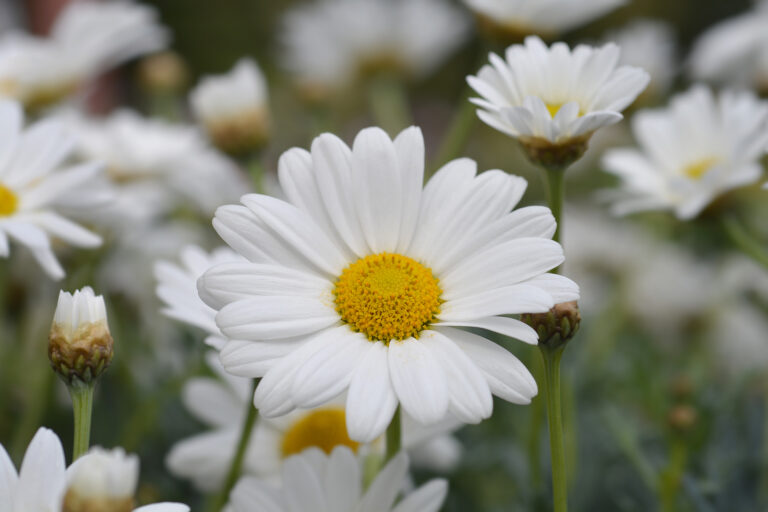How to Grow Berberis – Barberry
Berberis — commonly called barberry–are evergreen and deciduous shrubs with spiny stems, colorful fall foliage, colorful fruits, and small yellow or orange spring flowers. Berberis are highly adaptable to extremes of climate and soil, and they require no more than ordinary garden care.
Berberis are vigorous growers. Inner branches require some cutting back to keep the plants from looking ratty. They benefit from cutting back to renew growth.
Berberis range from dwarf species and cultivars to large species that can be used in borders or hedges. Contact with the spines of Berberis can cause skin irritation.
Berberis is a genus of more than 450 species of spiny-stemmed evergreen or deciduous shrubs. Berberis are native to Africa, South America, and the Northern Hemisphere.
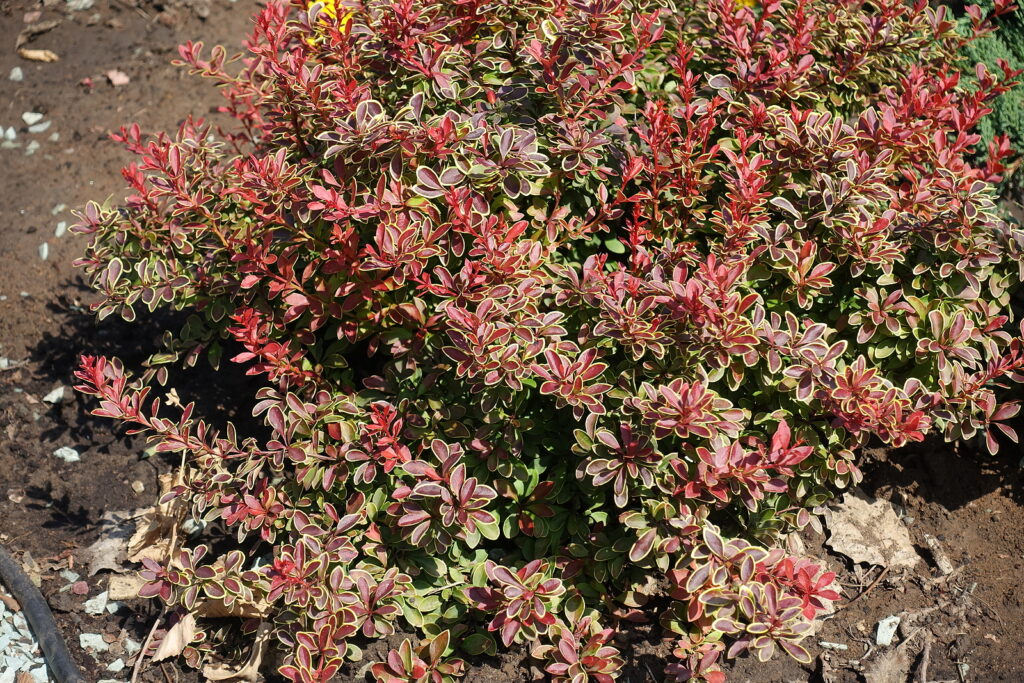
Get to know Berberis
- Plant type: Deciduous shrub
- Growing zones and range: Zones 4 to 8
- Hardiness: Hardy to Zone 4
- Height and width: 1.5-2 feet (.5-.6m) in smaller varieties; 10 feet (3m) tall and wide in larger varieties
- Growth rate: Slow.
- Form and habit: Wide-spreading, densely and arching branched.
- Foliage: Reddish purple leaves; some have spiny leaves and thorns; turn gold, orange, and crimson in fall.
- Flowers: Small yellow flowers in small clusters on stem undersides.
- Fruits: Bright red berries.
- Bloom time: Mid to late spring
- Uses: Gardens for fall foliage; small species good for rock gardens, large for hedge, thorny barrier, or as a specimen plant.
- Common name: Barberry
- Botanical name: Berberis
- Family name: Berberidaceae
- Origin: Northern Hemisphere and tropical Africa
Where to plant Berberis
- Plant Berberis in full sun for best color but Berberis will succeed in the shade.
- Berberis is adaptable to all types of soil.
When to plant Berberis
- Berberis transplants easily in early spring or fall.
- Sow Berberis seeds in the fall after removing them from the pulp.
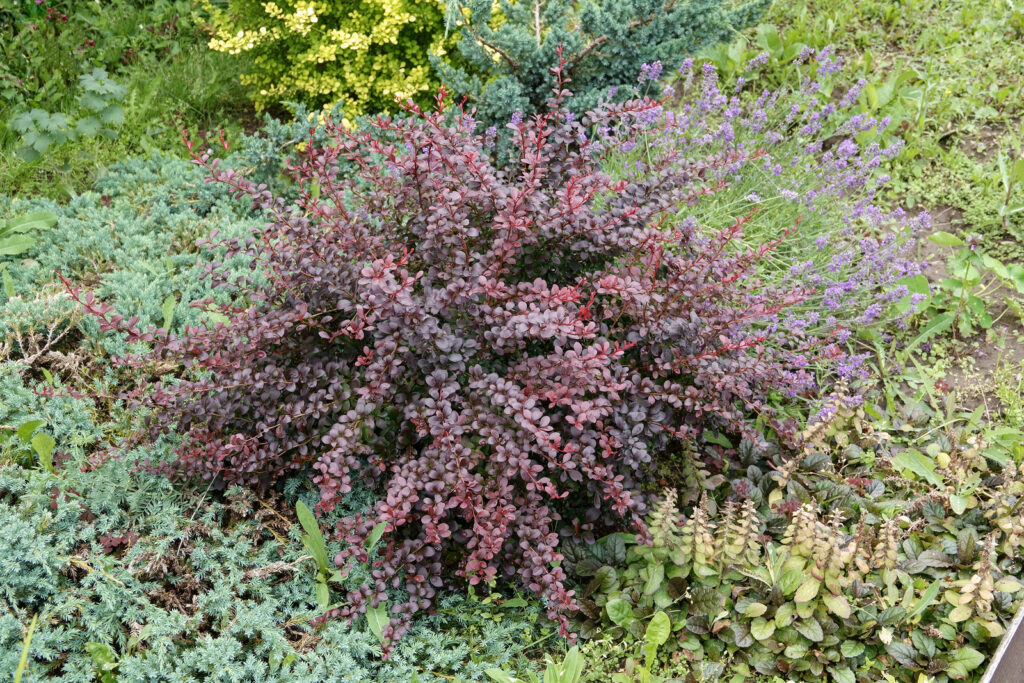
Planting and spacing Berberis
- Space Berberis 1.5 to 2 feet (.5-.6m) apart in smaller varieties; 10 feet (3m) apart for larger varieties.
- Sow Berberis seed 1/4 inch deep.
How to water and feed Berberis
- Give Berberis regular to moderate water.
- Berberis tolerates drought.
- Feed Berberis with an all-purpose organic fertilizer in spring.
How to care for Berberis
- Pruning season for Berberis is shortly after flowering.
- Prune Berberis to control the height and shape of a hedge shortly after the shrubs bloom, though the thorns make this difficult.
- Berberis require no more than ordinary garden care
Berberis pests and diseases
- Berberis can be attacked by scale insects, mites, and Japanese weevils.
- Berberis is prone to attack by canker, dieback, fungal leaf spots, powdery mildew, root rot, Verticillium wilt, and rust disease.
Berberis propagation
- Root Berberis softwood cuttings in summer.
- Sow seed in in a seedbed in early spring.
Berberis varieties to grow
- Berberis x chenaultii, Chenault barberry, this cold-hardy evergreen developed in France in the 1930s, grows 3-4 feet (.9-1.2m) tall and slightly wider and bears shiny dark green leaves that turn bronzy red with the first frosts. Zones 5 to 8.
- B. darwinii, Darwin barberry, upright evergreen with fountain-like growth, to 10 feet (3.1m) high and wide and then spreading, with spiny, glossy, 1.5 inch (3.8cm) dark green leaves. It bears 2 inch (5.1cm) racemes of gold to orange flowers in early spring, then pea-sized dark turquoise berries. Zones 7 to 9.
- B. gladwynensis, ‘William Penn’, the habit is a dense 4 foot (1.2m) mound. High-gloss leaves to 4 inches (10.2cm) turn bronze in winter, and some will fall in the northern part of its range. Bright yellow midspring flowers are followed by .5 inch (1.3cm) yellow fruits tinged with purple. Zones 6 to 9.
- B. julianae, Wintergreen barberry, a favorite on the East Coast in Zones 6 to 8, is a 4-6 foot (1.2-1.8m) shrub with yellow flowers and spiny dark leaves that make a forbidding hedge. The berries are bluish-black.
- B. verruculosa, Warty barberry, a refined 3 foot (.9m) plant with glossy green 1 inch (2.5cm) leaves that turn bronze in the fall, is safely hardy to Zone 6. Its large golden-yellow flowers are followed by blue-black berries with a dusky bloom. The dark green foliage of a Midwest favorite, 5-6 foot (1.5-1.8m) B. mentorensis (Zones 5 to 8), turns a flaming scarlet red in the fall.
- B. vulgaris, Common barberry, considered an invasive pest by naturalists in 26 states from coast to coast and should be avoided.
- B. thurnbergii var. atropurpurea, Japanese barberry, are especially popular, such as the thorny 2 foot (.6m) dwarf ‘Crimson Pygmy’, with reddish-purple leaves and bright red berries in fall. White-flowered ‘Rose Glow’ and ‘Pink Queen’ are 5 foot (1.5m) forms with lovely rose-pink foliage when young, deepening in color and developing flecks and streaks of gray, white, or reddish-purple with age. The leaves of ‘Aurea’ are luminous yellow when new and turn pale green-yellow in late summer. These hardy shrubs thrive in Zones 4 or 5 to 8.


